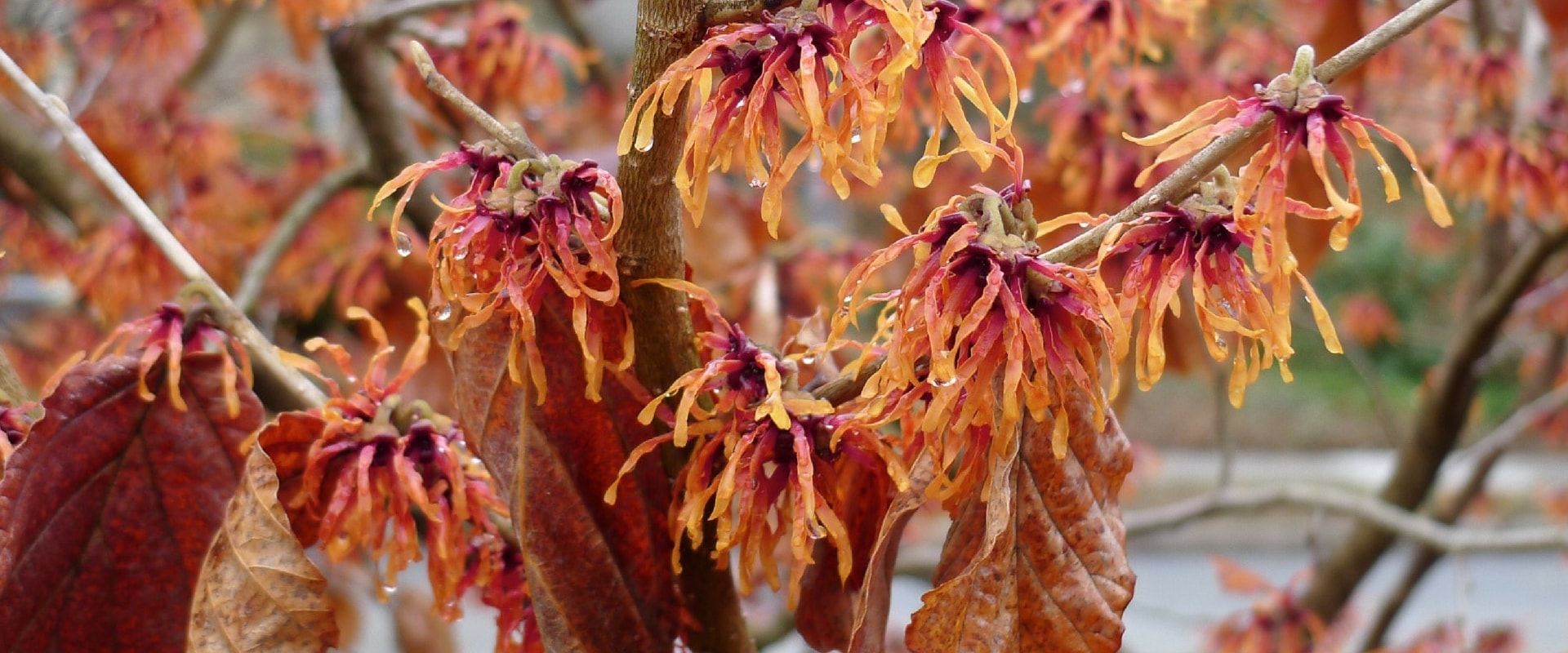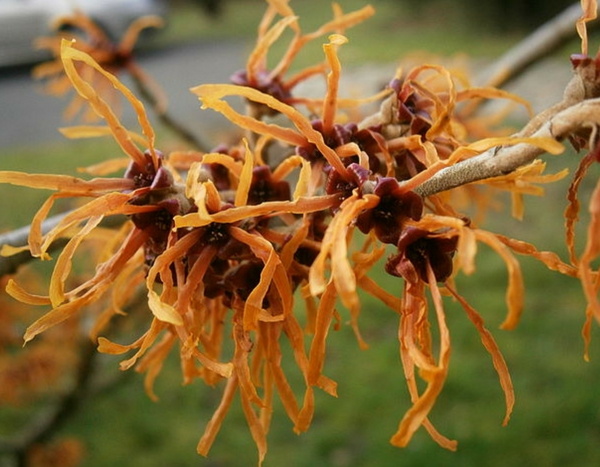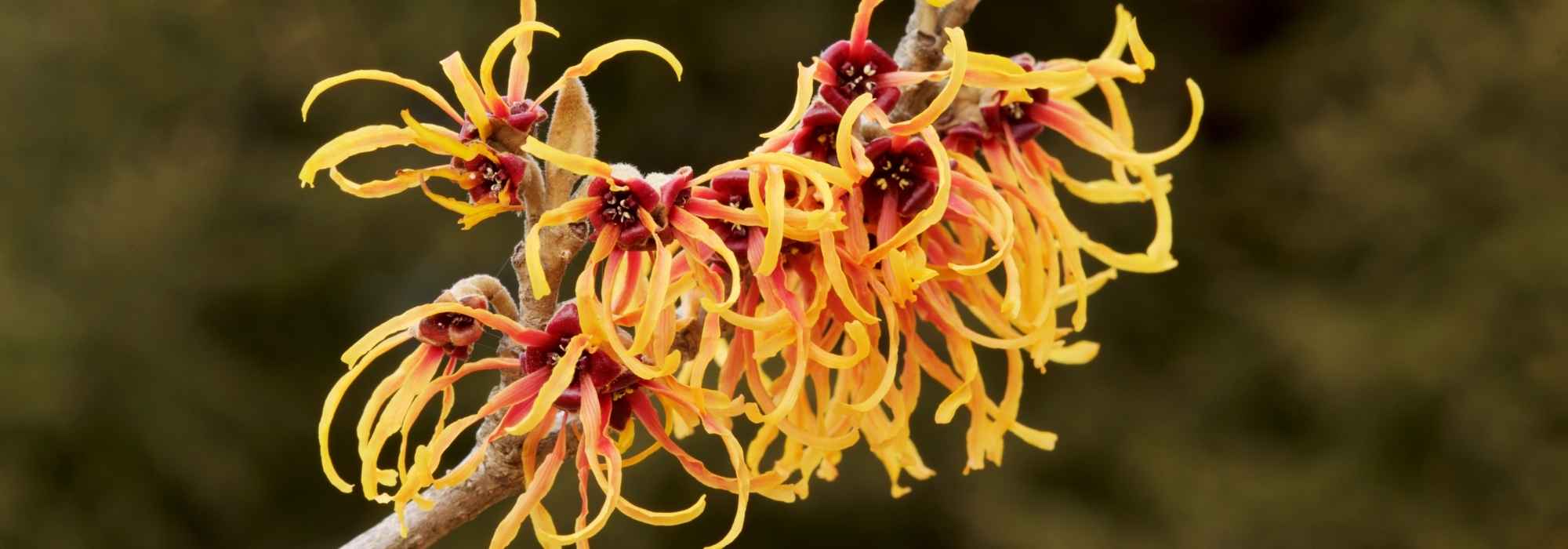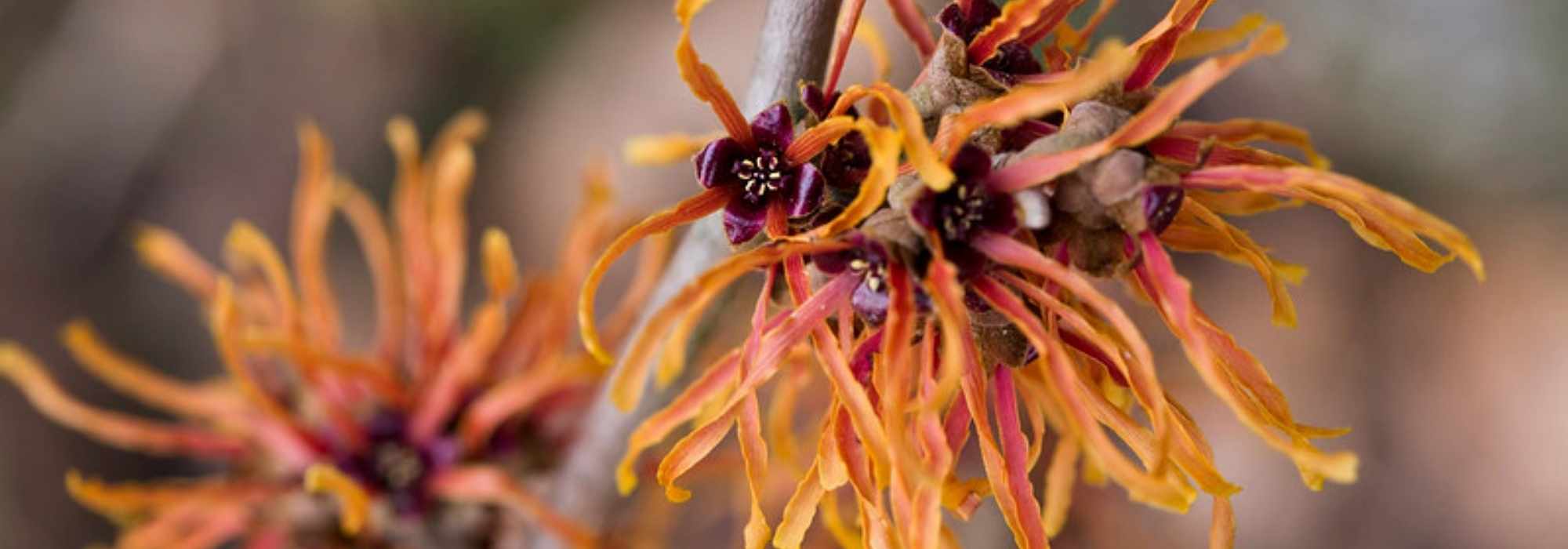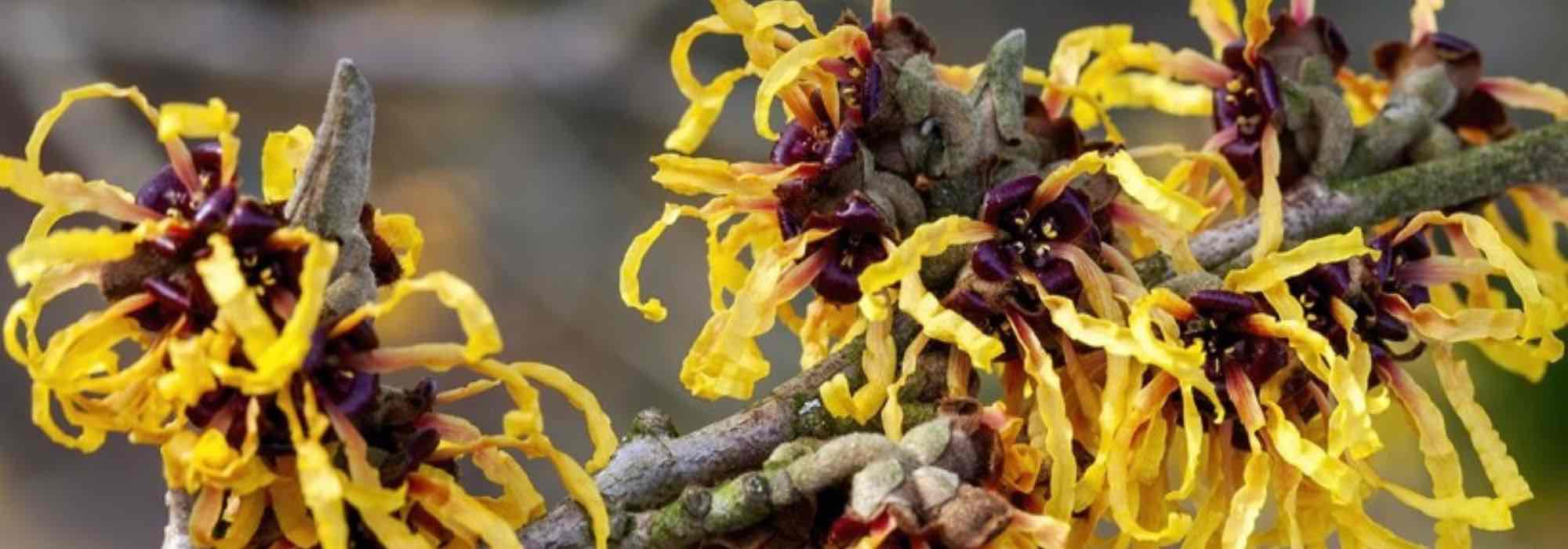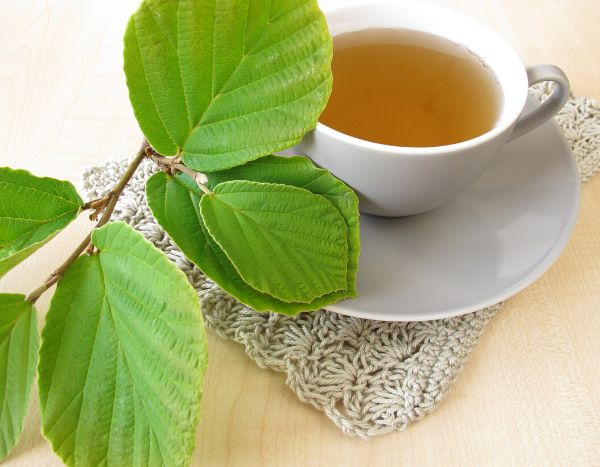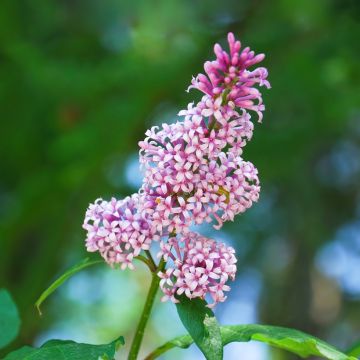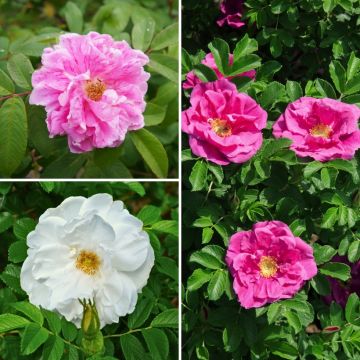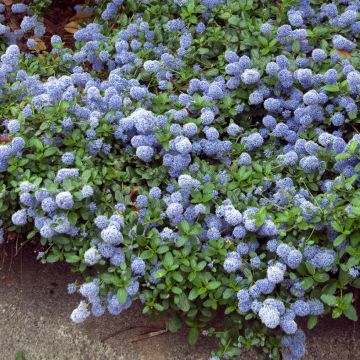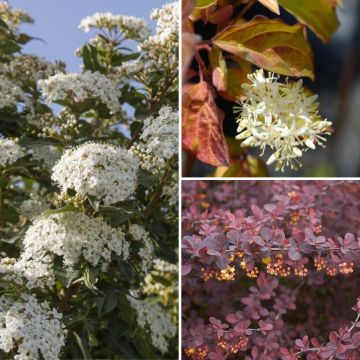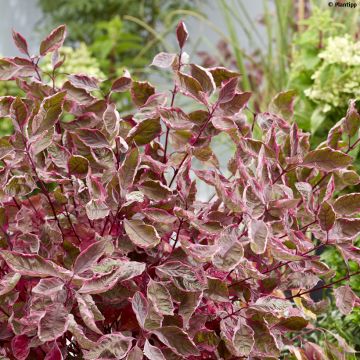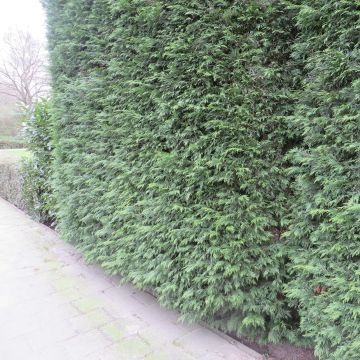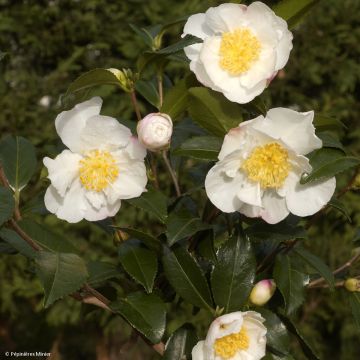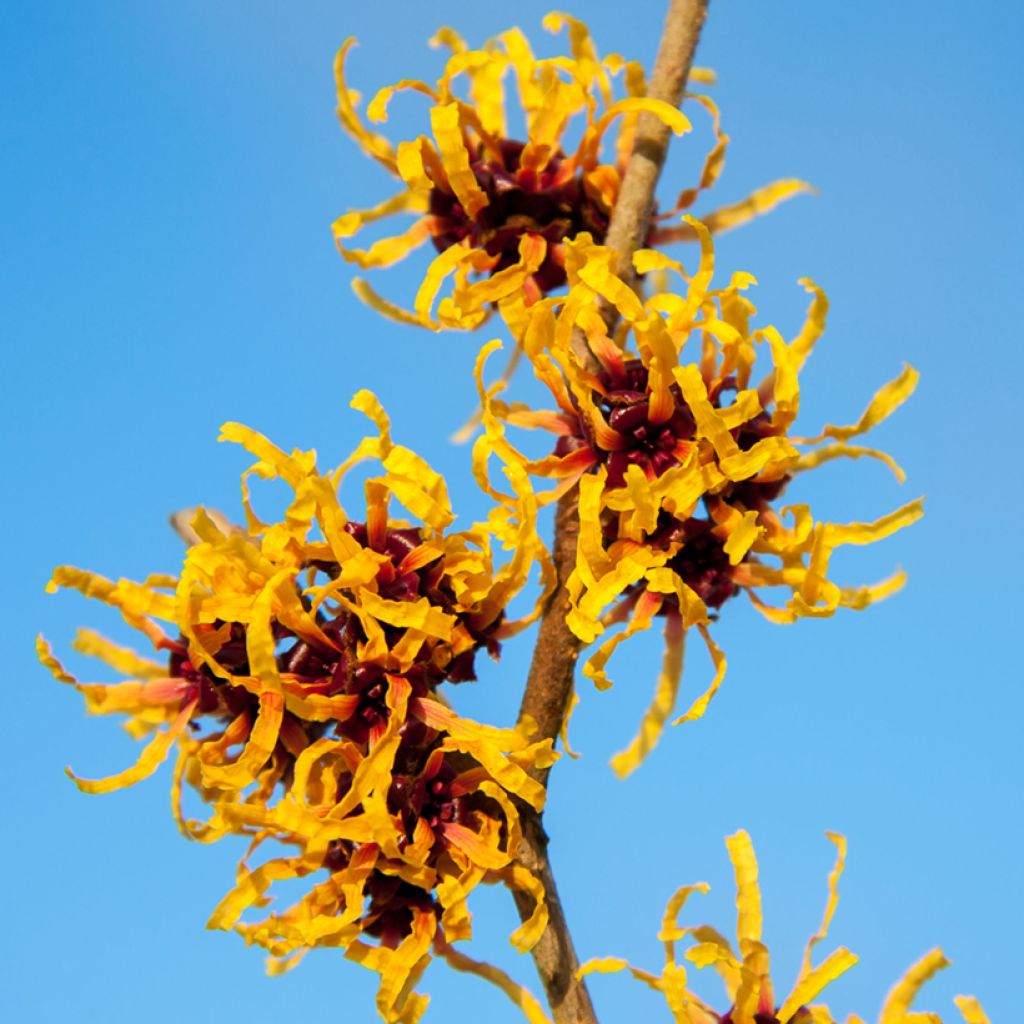

Hamamelis x intermedia Orange Beauty - Witch Hazel
Hamamelis x intermedia Orange Beauty - Witch Hazel
Hamamelis x intermedia Orange Beauty
Witch hazel
Special offer!
Receive a €20 voucher for any order over €90 (excluding delivery costs, credit notes, and plastic-free options)!
1- Add your favorite plants to your cart.
2- Once you have reached €90, confirm your order (you can even choose the delivery date!).
3- As soon as your order is shipped, you will receive an email containing your voucher code, valid for 3 months (90 days).
Your voucher is unique and can only be used once, for any order with a minimum value of €20, excluding delivery costs.
Can be combined with other current offers, non-divisible and non-refundable.
Home or relay delivery (depending on size and destination)
Schedule delivery date,
and select date in basket
This plant carries a 24 months recovery warranty
More information
We guarantee the quality of our plants for a full growing cycle, and will replace at our expense any plant that fails to recover under normal climatic and planting conditions.
Does this plant fit my garden?
Set up your Plantfit profile →
Description
Hamamelis x intermedia 'Orange Beauty' is a variety of Witch Hazel with winter flowering in orange. Its orange flowers resemble spiders with their small, curved filaments resembling legs. This flowering, which brings joy in this often dark season, is not its only attraction, as its deciduous green foliage, which appears after the flowers, turns yellow and then orange in autumn. Reserved for cool and non-limestone soils, this bush is a must-have for autumn and winter scenes in the garden.
Hamamelis belongs to the small family of Hamamelidaceae, mainly known to enthusiasts for a few genera such as Corylopsis, with its early yellow flowering, Fothergilla, or Loropetalum. The Hamamelis genus has only five species, three from North America and two from Asia, Hamamelis japonica and H. mollis, which through cross-breeding have given rise to H. x intermedia. The witch hazel is so named because of its foliage resembling that of the hazel tree and its flowering with small, slightly claw-like filaments like the fingers of this creature.
'Orange Beauty' is a variety of Hamamelis x intermedia that started its career under the simple name of 'Orange', then renamed 'Orange Beauty' 10 years later. It is also sometimes referred to as 'August Lamkem'. Slow-growing, this Hamamelis will reach 1.50m after 10 years of cultivation and approximately 3m in height with a similar spread at maturity. It has a very characteristic spreading habit, with initially airy branching that densifies with age. In January and February, the bare wood is covered with small flowers about 3cm in size, consisting of narrow and frizzy filaments that are easily identifiable. They have an orange colour that darkens slightly towards the base of the flower, which itself is a mahogany red, creating a very nice contrast. Despite their modest size, the flowers are quite visible as they are numerous and not concealed by the leaves, which will appear later, after the fading. They are slightly fragrant. The ascending branches bear deciduous leaves. Measuring approximately 10 to 12cm long and 6 to 8cm wide, they are ovate in shape. Dark green on the upper side and much lighter on the underside, they have well-marked veins. They are carried by short petioles of 1cm and are slightly pendulous. In autumn, they offer a remarkable spectacle by first turning yellow, then changing to orange before finally falling.
Hamamelis 'Orange Beauty' has its rightful place in the creation of an autumn and winter flower bed. You can accompany it with a few Autumn Camellias, with white, pink, or red flowers, whose evergreen foliage will enhance the flowers of 'Orange Beauty'. Edgeworthia chrysantha 'Nanjing Gold' is a small bush with very structured branching that produces pleasant-smelling yellow flower balls from February to April, extending the flowering period of your flower bed into spring. More hardy, Stachyurus praecox is another bush for autumn and winter: at the end of the season, its foliage takes on beautiful red-purple colours, and in February-March, it blooms with pendant clusters of yellow bell-shaped flowers that resemble pearl necklaces.
Hamamelis x intermedia Orange Beauty - Witch Hazel in pictures
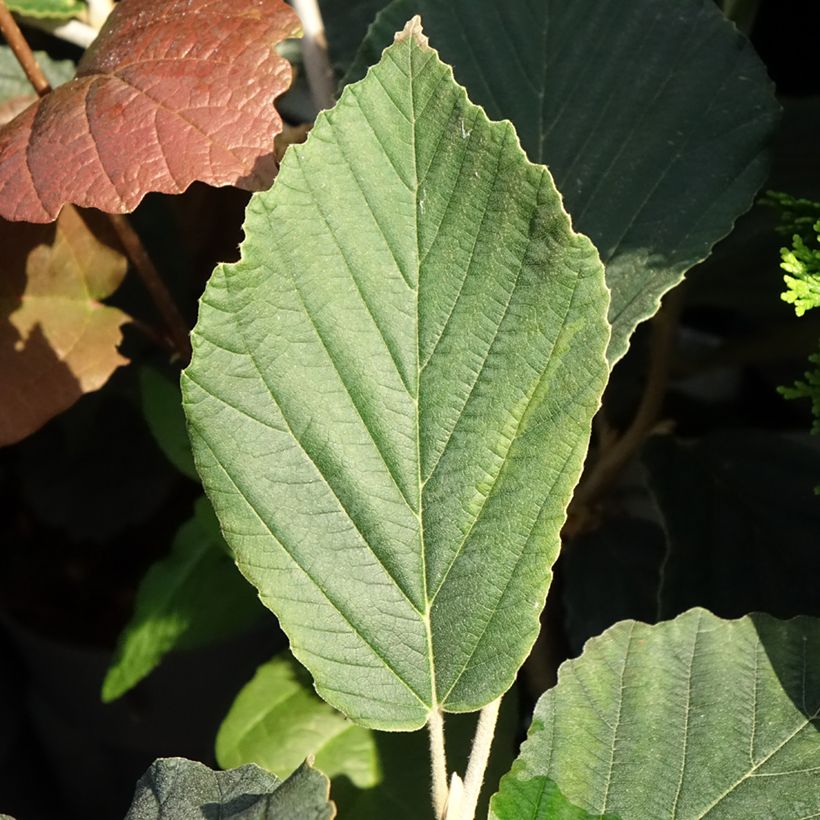

Plant habit
Flowering
Foliage
Botanical data
Hamamelis
x intermedia
Orange Beauty
Hamamelidaceae
Witch hazel
Cultivar or hybrid
Planting and care
To fully enjoy the beauty of your Hamamelis x intermedia 'Orange Beauty', plant it near your house. A sunny exposure in winter and partial shade provided by a wall or deciduous trees for the rest of the year will be preferred over scorching sun. Being sensitive to limestone, it should be grown in acidic soil, or at least in non-limestone soil enriched with leaf compost. This will also improve water retention, as this plant appreciates moist but well-drained soil. Mulching around the base of the bush will help maintain freshness in summer. A sufficiently deep and humus-bearing soil, even on limestone subsoil, should not hinder the growth of the witch hazel.
Planting period
Intended location
Care
Planting & care advice
This item has not been reviewed yet - be the first to leave a review about it.
Similar products
Haven't found what you were looking for?
Hardiness is the lowest winter temperature a plant can endure without suffering serious damage or even dying. However, hardiness is affected by location (a sheltered area, such as a patio), protection (winter cover) and soil type (hardiness is improved by well-drained soil).

Photo Sharing Terms & Conditions
In order to encourage gardeners to interact and share their experiences, Promesse de fleurs offers various media enabling content to be uploaded onto its Site - in particular via the ‘Photo sharing’ module.
The User agrees to refrain from:
- Posting any content that is illegal, prejudicial, insulting, racist, inciteful to hatred, revisionist, contrary to public decency, that infringes on privacy or on the privacy rights of third parties, in particular the publicity rights of persons and goods, intellectual property rights, or the right to privacy.
- Submitting content on behalf of a third party;
- Impersonate the identity of a third party and/or publish any personal information about a third party;
In general, the User undertakes to refrain from any unethical behaviour.
All Content (in particular text, comments, files, images, photos, videos, creative works, etc.), which may be subject to property or intellectual property rights, image or other private rights, shall remain the property of the User, subject to the limited rights granted by the terms of the licence granted by Promesse de fleurs as stated below. Users are at liberty to publish or not to publish such Content on the Site, notably via the ‘Photo Sharing’ facility, and accept that this Content shall be made public and freely accessible, notably on the Internet.
Users further acknowledge, undertake to have ,and guarantee that they hold all necessary rights and permissions to publish such material on the Site, in particular with regard to the legislation in force pertaining to any privacy, property, intellectual property, image, or contractual rights, or rights of any other nature. By publishing such Content on the Site, Users acknowledge accepting full liability as publishers of the Content within the meaning of the law, and grant Promesse de fleurs, free of charge, an inclusive, worldwide licence for the said Content for the entire duration of its publication, including all reproduction, representation, up/downloading, displaying, performing, transmission, and storage rights.
Users also grant permission for their name to be linked to the Content and accept that this link may not always be made available.
By engaging in posting material, Users consent to their Content becoming automatically accessible on the Internet, in particular on other sites and/or blogs and/or web pages of the Promesse de fleurs site, including in particular social pages and the Promesse de fleurs catalogue.
Users may secure the removal of entrusted content free of charge by issuing a simple request via our contact form.
The flowering period indicated on our website applies to countries and regions located in USDA zone 8 (France, the United Kingdom, Ireland, the Netherlands, etc.)
It will vary according to where you live:
- In zones 9 to 10 (Italy, Spain, Greece, etc.), flowering will occur about 2 to 4 weeks earlier.
- In zones 6 to 7 (Germany, Poland, Slovenia, and lower mountainous regions), flowering will be delayed by 2 to 3 weeks.
- In zone 5 (Central Europe, Scandinavia), blooming will be delayed by 3 to 5 weeks.
In temperate climates, pruning of spring-flowering shrubs (forsythia, spireas, etc.) should be done just after flowering.
Pruning of summer-flowering shrubs (Indian Lilac, Perovskia, etc.) can be done in winter or spring.
In cold regions as well as with frost-sensitive plants, avoid pruning too early when severe frosts may still occur.
The planting period indicated on our website applies to countries and regions located in USDA zone 8 (France, United Kingdom, Ireland, Netherlands).
It will vary according to where you live:
- In Mediterranean zones (Marseille, Madrid, Milan, etc.), autumn and winter are the best planting periods.
- In continental zones (Strasbourg, Munich, Vienna, etc.), delay planting by 2 to 3 weeks in spring and bring it forward by 2 to 4 weeks in autumn.
- In mountainous regions (the Alps, Pyrenees, Carpathians, etc.), it is best to plant in late spring (May-June) or late summer (August-September).
The harvesting period indicated on our website applies to countries and regions in USDA zone 8 (France, England, Ireland, the Netherlands).
In colder areas (Scandinavia, Poland, Austria...) fruit and vegetable harvests are likely to be delayed by 3-4 weeks.
In warmer areas (Italy, Spain, Greece, etc.), harvesting will probably take place earlier, depending on weather conditions.
The sowing periods indicated on our website apply to countries and regions within USDA Zone 8 (France, UK, Ireland, Netherlands).
In colder areas (Scandinavia, Poland, Austria...), delay any outdoor sowing by 3-4 weeks, or sow under glass.
In warmer climes (Italy, Spain, Greece, etc.), bring outdoor sowing forward by a few weeks.






























